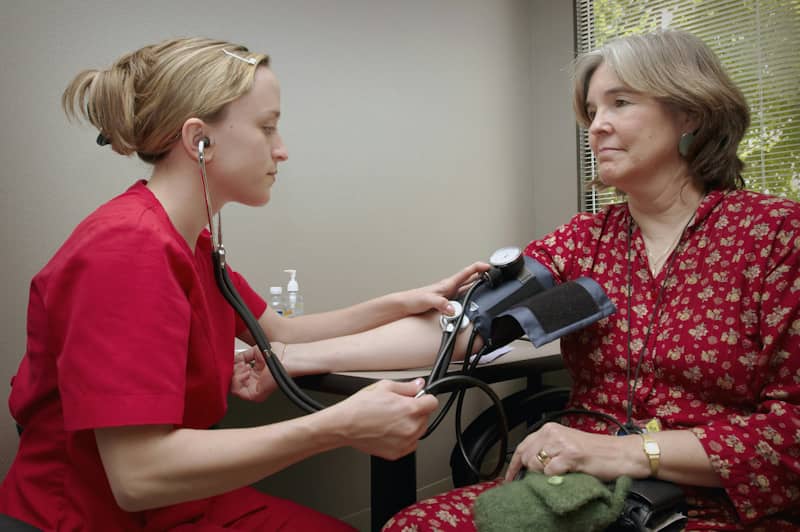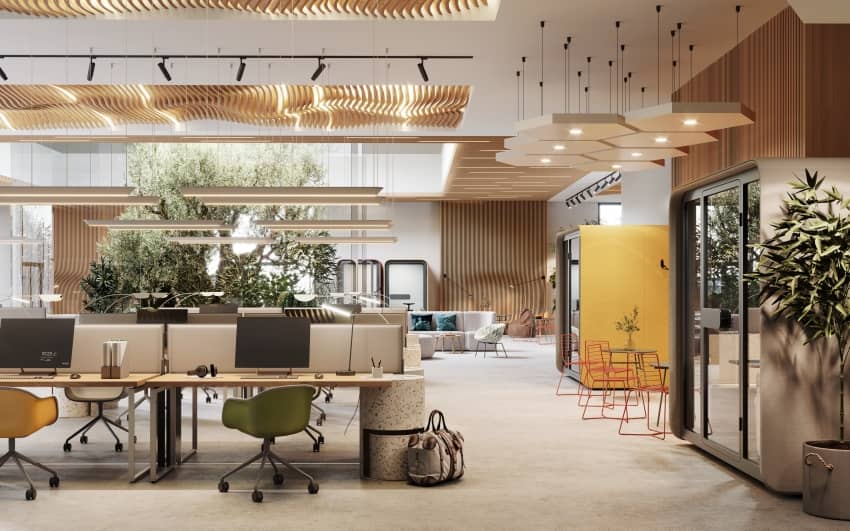The trends in the modern, flexible workplace have shifted the way people work throughout different sectors. However, one of the sectors where flexible work and workplace management have difficulty penetrating is the healthcare sector.
Given the nature of work, flexible working at first will seem unsuitable for healthcare professionals. Especially where a high premium and necessity requires physical presence and face-to-face interactions.
Contrary to popular belief, we think modern workplace trends ideally fit the healthcare sector. They improve operational efficiency, productivity, staff, and space usage.
Why is it necessary to adopt the modern workplace practises in the healthcare sector?
Benefits of a workplace management system
There are a lot of benefits from adopting modern workplace management practices in the healthcare sector.
Rising Costs
With the rising cost of healthcare, hospital real-estate becomes a critical focus for CFOs to better manage facilities. Under-utilized spaces, results in poor return-on-investments in the facility. There is a rising need to either contain costs or to ensure maximizing the usage of the space.
Regulatory Compliance
There os an increasing focus on climate change and a push towards carbon-neutrality. The hospital sector needs to focus more on reducing wastage. It should account for every dollar spent. We are closely monitoring the space to maximize patient outcomes. Operating costs should also be minimized.
Employee Satisfaction & Morale
It is a well-known fact that the pressure and mental health of healthcare professionals are of utmost importance. The increasing turnover of staff and constant struggle to meet demand require treating employees well. A conducive work environment minimizes friction.
ESG Compliance
Compliance with ESG guidelines requires monitoring and managing every aspect of hospital operations for environmental, social, and governance aspects. The push towards ESG demands efficiently using spaces and lowering the carbon footprint towards net-zero. This push has forced many sectors to re-look at how technology can help in improving operations while reducing expenses. With a proper workplace management system, meeting ESG guidelines can be achievable.
Many factors affect the 4 points mentioned above but our focus is on how spaces primarily contribute to these points and what we can do about them. The nature of the job, the dynamism of the staff and the ever-growing need for space can directly affect the productivity and efficiency of the workforce as most of them spend almost half their day in the workplace.
Below we discuss more in detail the specific aspects of healthcare work and how workplace management can help in providing benefits.
Facilities That Benefit from a workplace management system
Doctor’s Office
Typically, each hospital has a doctor’s office (or cubicle) where he or she has a space reserved for their use. While this reserved space exists, the busy schedules of doctors hardly allow them time to actually occupy it. In fact, many hospital administrative offices have rows upon rows of empty cubicles with doctors’ names on the doors. But nobody ever uses them.
We find that doctors on secondment or transfer have assigned cubicles. However, when they leave, the cubicles remain assigned to them.
These scenarios result in poor utilization of space, outdated information on the cubicles, and poor coordination.
A workplace management system can actually allow facilities and staff administrators to reserve cubicles for specific doctors for the duration of their stay and then release them once they leave. This provides clear visibility into the availability of spaces and the better allocation of such spaces to new doctors.
Private Spaces in Wards
In many hospitals, we find healthcare professionals needing space to discuss private information with their colleagues. This could be a doctor-nurse discussion on prescription and dosage, a doctor-to-patient/visitor discussion on confidential matters, or a nurse-to-nurse shift handover exchange. In typical fashion, the fast nature of their operation results in hallway or aisle conversations that are cumbersome and prone to eavesdropping.
Typically, almost all wards have meeting spaces. However, they are not efficiently used due to a lack of control over the usage of the space. A simple QR-code-based booking and checking-in can help better manage those spaces. With a quick reservation, such spaces can be scheduled in advance so that everyone is in the loop on what is going on in the space and how it is being used.
Booths
In most current hospitals, we find such conversations happen anywhere without due regard for privacy. Along the aisle or hallway or even in the cafeteria. Meeting rooms are the most abused where really private conversations require the person to quickly duck into a meeting room to have a call.
Booths are something that have become prominent and even essential in most modern workplaces. With the open working concept, where noise can be a major source of distraction, the booth provides a sound-proof, enclosed space where private conversations can happen.
Privacy is an important component of the healthcare sector, and doctors can have conversations with patients or guardians either in person or over a phone call in complete privacy.
A simple tablet-based device can be used to allow staff to check in, even anonymously to use the booth for their conversations. Once the conversation is done, they can tap and check out from the tablet to release the booth.
Meeting Rooms
As in all industries, meeting rooms are the most in-demand and this holds especially true for the healthcare sector where demand outstrips supply and there is a constant struggle to find spaces. We have even experienced territorial behavior where individuals reserve meeting spaces throughout the year, and secretaries actively refuse to allow others to use the spaces on their floors.This results in a tremendous wastage of occupancy and inefficient usage of space leading to opportunity loss for people who really need the space. It also results in management making ill-informed decisions on renovating the space to accommodate more meeting rooms.
A workplace management system can help meeting rooms be better managed by bringing in controls and access rights that prevent such behavior. Meeting room bookings can be more streamlined and made accessible to those who need them the most.
Case Rooms
Case rooms are highly critical spaces where patients and guardians meet with hospital representatives for cases such as grievances, complaints, and even legal discussions. These rooms are specially sound-proof with cameras, voice recorders, and even secretarial services such as note-taking. While most hospitals have such spaces, they also use them as meeting rooms and discussion spaces.
The control of such specialized spaces only for certain use cases can be achieved using a workplace management system that allows for approval of bookings and also with privacy settings enabled so the meeting details are not divulged to anyone.
Auditoriums/ Theatres
Auditoriums and theatres are very few in hospitals. However, they are still in high demand. The difference between these spaces and other commonly used spaces is that they require preparation of the space before usage. For example, conferences or large audience events held in auditoriums require the preparation of audio-visual equipment, lighting, and stage management. Such spaces require advanced planning and preparation before usage.
With workplace management, such events can be easily registered and even equipment and manpower can be reserved for usage.
Equipment/ Resources
As mentioned in the above section, resources such as equipment, manpower, and even vehicles such as buses and ambulances are critical assets that require careful management and accounting. We have observed registering a variety of equipment in the workplace management systems to achieve better visibility in allocation and reservation.
A workplace management system with a unified resource booking module can help manage such resources along with spaces if necessary to help facilities and administrators get better control over their assets.
Conclusion
Workplace management in the healthcare sector can prove to be of great benefit when implemented correctly. With a wide variety of spaces, it is important to manage such spaces across the campus and have a system in place to provide a unified view of the spaces. With a workplace management system like ecobook, one can easily adopt modern workplace practices in the healthcare sector without having to overhaul existing processes.





